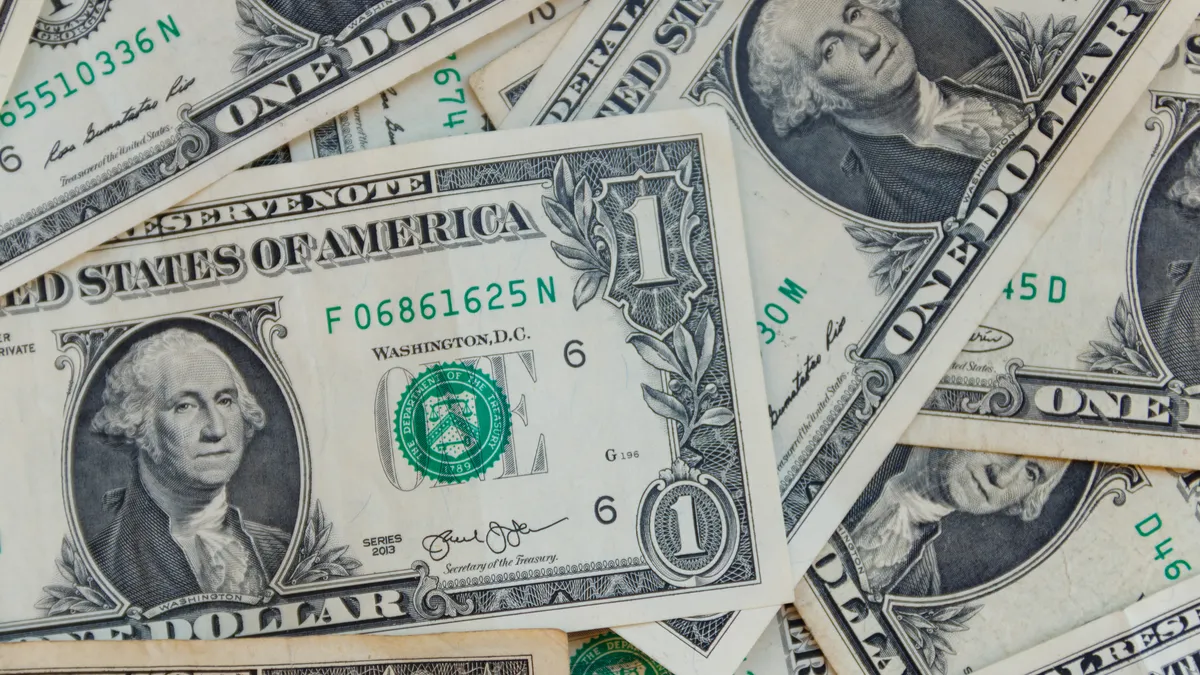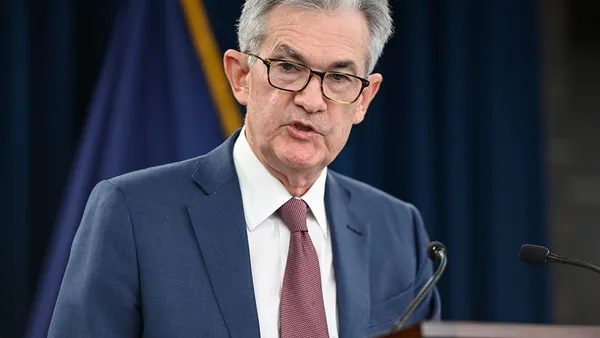Dive Brief:
- The outlook among small businesses dimmed last month, with a gauge of uncertainty rising to the highest level since October 2020 and inflation worries persisting as the Federal Reserve signals a plan to cut the main interest rate as early as next week, the National Federation of Independent Business said Tuesday.
- The frequency of reports of rising profits slumped to the lowest level since March 2010, the NFIB said, citing a monthly survey. Inflation — higher costs for labor and inputs — remained the No. 1 problem among small businesses.
- “The mood on Main Street worsened in August,” NFIB Chief Economist Bill Dunkelberg said in a statement. “Historically high inflation remains the top issue for [small business] owners as sales expectations plummet and cost pressures increase,” he said, flagging rising pessimism about the business outlook.
Dive Insight:
Inflation has followed a jagged downward path since mid-2023, with the personal consumption expenditures price index rising at a 2.5% annual rate in July, above the Fed’s 2% target and the same pace as June.
Fed Chair Jerome Powell and his fellow policymakers have said in recent months that falling price pressures and a softening labor market have prompted them to focus more on the other half of their dual mandate — ensuring full employment.
“In light of the considerable and ongoing progress toward” hitting the central bank’s inflation goal, “I believe that the balance of risks has shifted toward the employment side of our dual mandate, and that monetary policy needs to adjust accordingly,” Fed Governor Christopher Waller said in a speech Friday. “I believe it is important to start the rate cutting process at our next meeting,” scheduled for Sept. 17-18.
The Federal Open Market Committee will probably trim borrowing costs at a slower pace than many previous periods of easing, Fitch Ratings Chief Economist Brian Coulton said Tuesday in a note to clients.
“The long-awaited Fed easing cycle is upon us, but the FOMC will be cautious after the inflation challenges of the past few years,” Coulton said. “The pace of rate cuts will be gentle and monetary easing won’t do much to boost growth next year.”
Policymakers still need to make progress corralling inflation, Fitch said in its Global Economic Outlook released Tuesday. Services inflation, which makes up 75% of the consumer price index excluding food and energy, persists at an annual rate of about 5% and “is far higher than compatible with overall inflation at 2%.”
“The inflation challenges faced by the Fed over the past three and a half years are also likely to engender caution among FOMC members,” Fitch said. “It took far longer than anticipated to tame inflation and gaps have been revealed in central banks’ understanding of what drives inflation.”
Moving with caution, policymakers will probably trim the federal funds rate by a quarter point twice this year, five times next year and three times in 2026, leaving the main rate at 3% in September 2026, Fitch forecasts.
Such a policy path would lead to a 2.5 percentage point reduction in the benchmark rate in 10 moves over a period of 25 months, Fitch said. In previous easing cycles since the mid-1950s, policymakers on average have cut the main rate 4.7 percentage points over a period of eight months.
“Our current forecasts are clearly less aggressive both in size and speed than most prior easing cycles,” Fitch said.
Small business owners with a gloomy view of profit prospects largely blamed weaker sales, the NFIB said. They also cited the rising price of materials and labor costs.
The NFIB has surveyed its members on economic trends every month since 1986.












